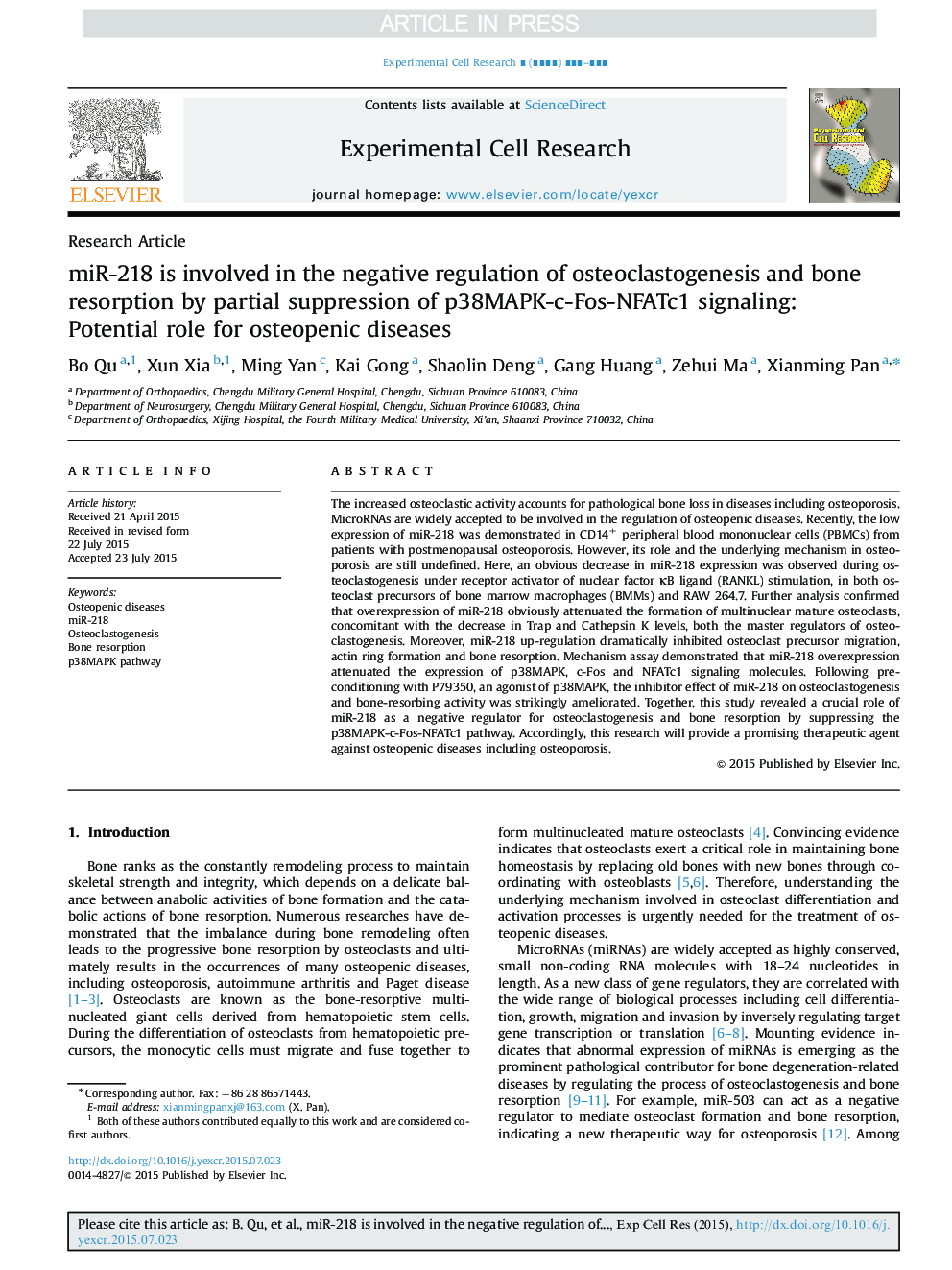| Article ID | Journal | Published Year | Pages | File Type |
|---|---|---|---|---|
| 10903837 | Experimental Cell Research | 2015 | 8 Pages |
Abstract
The increased osteoclastic activity accounts for pathological bone loss in diseases including osteoporosis. MicroRNAs are widely accepted to be involved in the regulation of osteopenic diseases. Recently, the low expression of miR-218 was demonstrated in CD14+ peripheral blood mononuclear cells (PBMCs) from patients with postmenopausal osteoporosis. However, its role and the underlying mechanism in osteoporosis are still undefined. Here, an obvious decrease in miR-218 expression was observed during osteoclastogenesis under receptor activator of nuclear factor κB ligand (RANKL) stimulation, in both osteoclast precursors of bone marrow macrophages (BMMs) and RAW 264.7. Further analysis confirmed that overexpression of miR-218 obviously attenuated the formation of multinuclear mature osteoclasts, concomitant with the decrease in Trap and Cathepsin K levels, both the master regulators of osteoclastogenesis. Moreover, miR-218 up-regulation dramatically inhibited osteoclast precursor migration, actin ring formation and bone resorption. Mechanism assay demonstrated that miR-218 overexpression attenuated the expression of p38MAPK, c-Fos and NFATc1 signaling molecules. Following preconditioning with P79350, an agonist of p38MAPK, the inhibitor effect of miR-218 on osteoclastogenesis and bone-resorbing activity was strikingly ameliorated. Together, this study revealed a crucial role of miR-218 as a negative regulator for osteoclastogenesis and bone resorption by suppressing the p38MAPK-c-Fos-NFATc1 pathway. Accordingly, this research will provide a promising therapeutic agent against osteopenic diseases including osteoporosis.
Related Topics
Life Sciences
Biochemistry, Genetics and Molecular Biology
Cancer Research
Authors
Bo Qu, Xun Xia, Ming Yan, Kai Gong, Shaolin Deng, Gang Huang, Zehui Ma, Xianming Pan,
